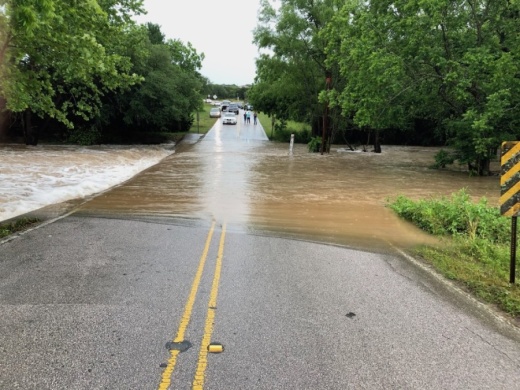Bee Cave council members were on the cusp of approving a motion to move forward with bridge construction until the engineering firm studying the issue would not precisely recommend the length and height of the bridge.
After a discussion, slide presentation and public hearing that focused mainly on a proposed 120-foot bridge, City Manager Clint Garza asked the city’s consultant Saxon Loomis Consulting Group to give the council a formal recommendation. It was at that point that Saxon Loomis principal engineer Tom Loomis said a “10% safety factor” might require the bridge to be longer.
“The size and scale of that bridge would be what?” Garza said.
“In the vicinity of 130 feet long. Again, we would have to do some more analyses,” Loomis said as he dialed into the meeting at City Hall via an internet connection. “I don’t want to give you the final length of the bridge. Just for safety sake, say 140 feet.”
At that point, Bee Cave Mayor Kara King said she was not comfortable with what she was hearing, and she and Bee Cave Council Member Jon Cobb revised their initial motion to build a 120-foot bridge to take into account that the bridge might need to be longer. When Cobb tried for a second motion, Loomis then brought up the height of the bridge as an issue.
“Well you may have to raise the bridge,” Loomis said. “You might have to raise it up by, say, 5 feet.”
At that point, Cobb said he was no longer comfortable voting on the bridge and asked for a proposal to come at the next City Council meeting. Loomis said he could have his analyses done in time, but wanted to know if the council preferred a longer bridge or a higher bridge.
King then asked that Loomis make the recommendation to council.
“Mr. Loomis, we are not engineers. And I think tonight we took this 120-foot, and all this detail, and an hourlong presentation and these slides to be your recommendation. So what I need from you going forward is—you tell us. You're the engineer. Come back, give us both options; we’ll make a decision.”
King said she was confident the proposal would be ready for the next council meeting scheduled for March 23.
The issue of what to do about the low-water crossing at Great Divide, leading into The Homestead neighborhood, has been discussed for many years. In 2017, Travis County presented a $4.2 million bridge design that was opposed by nearby residents because of its size, estimated at a previous council meeting to be as long as 500 feet.
Saxon Loomis on March 9 discussed spending as much as $2.05 million, and that option included both a vehicular and separate pedestrian bridge. A bridge for sole use by vehicles is estimated to cost from $1.71 million to $1.88 million depending largely on whether concrete or wood is used in its construction, according to estimates provided by Loomis at the meeting.
The city of Bee Cave’s direct involvement with the low-water crossing began in June 2019 with the entering of an interlocal agreement between the city and Travis County.
At a January council meeting, Saxon Loomis presented several different models of the flow of water in Little Barton Creek, in one case using nearly 80 years of rainfall data. The company engineers found that Little Barton Creek rarely overtops Great Divide, and when the roadway does flood, the duration of the event can be measured in hours.
The watershed has natural and constructed features that capture and slow a significant portion of stormwater runoff, Loomis said. More recently added to the study was examination of the Provence neighborhood upstream of Great Divide. Here, developers have designed a retention pond that Loomis said adequately slows neighborhood runoff into the Little Barton Creek watershed.
Once council accepts a formal recommendation from Saxon Loomis, city officials have six months to hire an engineer to design the project’s construction. The city of Bee Cave has responsibility for the project because the city in 2019 annexed the area of land that makes up the low-water crossing.





